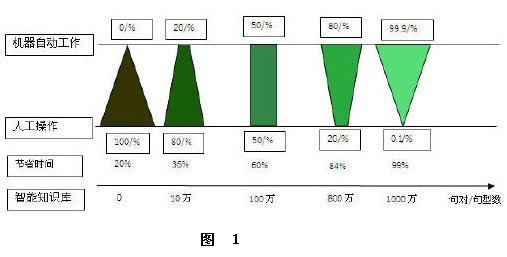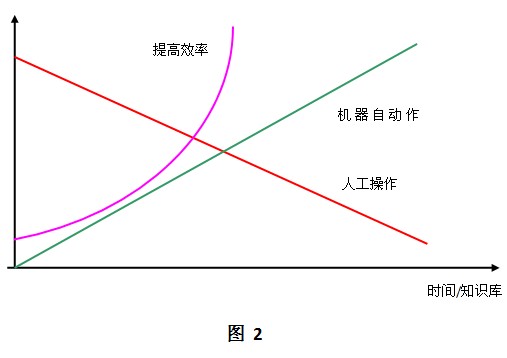|
Role
With the accumulation of translation knowledge, the role of AI knowledge base becomes more and more important.
Fig.1 depicts the role of AI knowledge base. For example, in an AI knowledge base of some profession, when the sentences are reduced to 10 million sentence patterns and with the number of accumulated sentences/sentence patterns in the AI knowledge base increases, the time of machine automatic work is more while the workload of manual operation is less.
For example, when the number of accumulated sentences/sentence patterns in the AI knowledge base is 100,000, the machine can automatically do 20% of the work while people do 80%. And the time saved is 36%.
When the number of accumulated sentences/sentence patterns in the AI knowledge base is 1 million, the machine can automatically do 50% of the work while people do 50%. And the time saved is 60%.
When the number of accumulated sentences/sentence patterns in the AI knowledge base is 8 million, the machine can automatically do 80% of the work while people do 20%. And the time saved is 84%.
When the number of accumulated sentences/sentence patterns in the AI knowledge base is 10 million, the machine can automatically do most of the work for example 99.9% and people only need to do 0.1% of the work. And the time saved is 99%.

Fig 2 depicts the role of AI knowledge base from another perspective. The horizontal axis is the development/accumulated time (month/year) of AI knowledge base. The vertical axis indicates the workload and efficiency of translation.
From the picture we can see that, with the development/accumulation of AI knowledge base, the workload of manual operation decreases linearly, while the automatic machine work increases. The index of work efficiency is multiplied.

|



